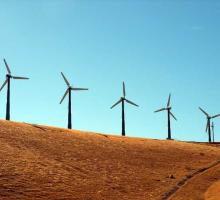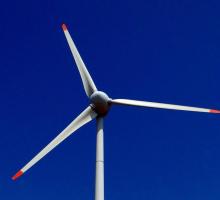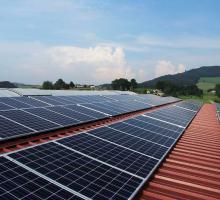- Renewable Natural Resources
- Non-renewable Natural Resources
- Biotic Natural Resources
- Abiotic Natural Resources
- Potential Natural Resources
- Actual Natural Resources
Natural resources are those elements provided by nature without human intervention and which can be exploited by mankind to satisfy certain needs.
In addition to natural resources, there are human resources, cultural resources, machinery, real estate, etc. Clearly, there are other types of resources that cannot be provided by nature without human intervention. These other types of resources are indeed, man-made.
According to its renewability, natural resources can be classified as renewable and non-renewable.
Renewable Natural Resources
These are the natural resources that are never depleted despite their continual use. This characteristic is due to two reasons:
1- The available stock or state of the resource is not modified by its exploitation: solar energy, wind power, hydraulic energy, bio-thermal energy, etc.
2- Their rate of renewal is fast enough for continual use to occur without being depleted: fish, forests, biomass, etc. However, these types of natural renewable resources can cease to be renewable if used in excess. For instance, excessive fishing depletes the number of certain species over time. In other words, the exploitation rate is greater than the regeneration rate. The same is happening to many native forests.
Non-Renewable Natural Resources
These are resources that exist in fixed quantities or whose regeneration rate is lower than their exploitation rate. As non-renewable natural resources are used, their stock decreases until they are completely depleted. Some examples of non-renewable natural resources are petroleum, minerals, and natural gas.
Petroleum plays an important role in the economy, as the current economic system relies heavily on the energy it provides. As stated, petroleum is a non-renewable natural resource; this means that someday it will be completely diminished. This is why research is being conducted on alternate energy options to replace petroleum. Some alternatives are biofuels, solar energy, wind power, and the use of hydrogen as a fuel. There is also concern about the environmental impact caused by the use of fossil fuels, mainly due to a phenomenon known as “global warming”. This phenomenon would increase temperature levels in the entire world, resulting in terrible consequences for the ecosystems.
According to its origin, natural resources can be classified as biotic or abiotic.
Biotic Natural Resources
Biotic resources are derived from living organisms. Examples of biotic resources are Biomass and Fish.
Abiotic Natural Resources
Abiotic natural resources are not derived from living organisms. Examples of abiotic resources are solar radiation and water.
According to their stage of development, natural resources can be classified as potential and actual.
Potencial Natural Resources
Potential natural resources are still not used to satisfy human needs but can be potentially used.
Actual Natural Resources
Actual natural resources are actually being used to satisfy human needs.
Impact of natural resources on the economy
Natural resources are important to the world economy as well as to each individual country’s economy. They heavily influence the types of industries a country chooses to develop as well as international trade patterns, the international division of labor, etc. For instance, the fact that coal was available in England and in certain regions of Europe was the key to the industrial revolution in those countries. Arab countries in the Persian Gulf and Venezuela depend on the income they obtain from the exploitation of one natural resource: petroleum. The large and varied amount of natural resources available in the United States aided in the growth of a diversified economy.
Environmental Concerns
Environmental pollution, the decrease in biodiversity, deforestation of large areas of jungles and forests, excessive exploitation of marine and fish resources, show that the current capitalist system represents a threat to the existence of many non-renewable natural resources. It is imperative that governments take measures and that laws be enacted to address the current situation, and that people become aware of the importance of this topic in order to change certain attitudes or lifestyles that have negative environmental consequences.




